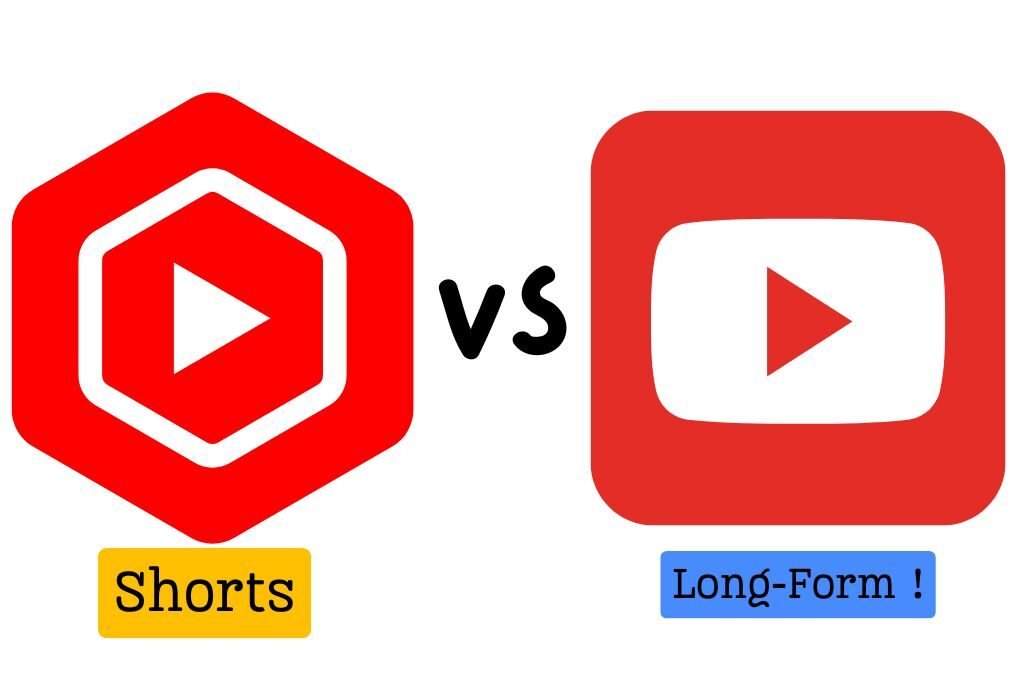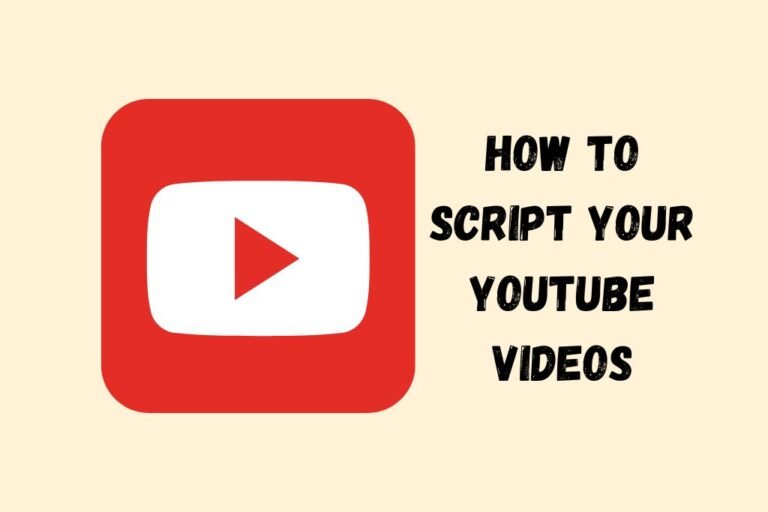YouTube Shorts Or Long Videos : What’s Working Right Now
In today’s fast‐paced digital landscape, YouTube continues to be a powerhouse platform for content creators, brands, and marketers alike. With the emergence of YouTube Shorts—a format designed for rapid, bite‐sized consumption—creators face an important decision: should they focus on the quick impact of Shorts or invest time in crafting longer, more in‐depth videos? In this article, we’ll explore the differences between these two formats, examine their respective strengths and drawbacks, and determine how each can be leveraged for growth and engagement in 2025 and beyond.

A Brief History of YouTube Content Evolution
YouTube began as a platform for sharing user-generated content in its most rudimentary form. In its early days, videos were typically longer and reflected raw home recordings or niche topics that built loyal communities around them. Over time, technological advancements, evolving consumer habits, and the broader impact of social media trends pushed creators to reconsider traditional storytelling.
The explosion of mobile viewing and the popularity of platforms like TikTok accelerated the demand for vertically formatted, short-duration content—enter YouTube Shorts. Originally launched as a response to the rising popularity of short-form videos on other platforms, Shorts quickly provided a new way for creators to capture fleeting viewer attention and experiment with creative, impactful ideas. Meanwhile, long-form videos, now more refined than ever, continue to offer depth, storytelling ability, and extensive audience engagement that builds community. This significant evolution in content types has produced a diverse ecosystem where both formats can coexist and complement each other.
The Essence of YouTube Shorts
YouTube Shorts are designed to deliver rapid bursts of content in 60 seconds or less. They are optimized for mobile consumption, presented vertically, and have a natural place in the dedicated Shorts shelf on the app. Here are some elements that define the Shorts format:
Key Features of Shorts
- Bite-Sized Content: Shorts are typically under one minute, making them ideal for grabbing attention quickly without requiring a large time commitment from the viewer.
- Vertical Orientation: With a focus on mobile-first design, these videos are shot in portrait orientation, ensuring that viewers can enjoy them seamlessly on their smartphones.
- Viral Potential: Due to their short duration and ease of consumption, Shorts are often highly shareable. They cater to trends and can quickly capture viral moments.
- Algorithmic Emphasis: YouTube’s algorithm often pushes Shorts to new viewers, especially if they generate rapid engagement, making them a powerful tool for exposure.
Benefits of Shorts
- Increased Visibility: The dedicated Shorts shelf on YouTube provides a unique opportunity to reach users who are specifically browsing short-form content.
- Ease of Production: Without the need for extensive planning or editing, creators can produce Shorts relatively quickly, testing out new ideas or trends in real time.
- Audience Engagement: The immediate nature of Shorts can drive high engagement rates, with content that is easy to consume and share.
- Fresh and Trendy: As trends emerge, Shorts allow creators to respond promptly to viral topics, making them ideal for capturing contemporary cultural moments.
Challenges for Shorts
- Limited Depth: With only seconds to communicate a message, conveying complex information or telling a detailed story becomes challenging.
- Monetization Hurdles: While exposure is high, the current monetization options for Shorts can be less lucrative compared to longer videos that allow for multiple ad placements.
- Viewer Retention: Although Shorts capture attention quickly, it is hard to build a long-term connection with viewers due to the rapid consumption style.
Diving Into Long-Form Videos
Long-form videos have long been the backbone of YouTube. Typically ranging anywhere from five minutes to an hour or more, these videos provide ample time to explore topics thoroughly, build narratives, and forge deep connections with audiences.
The Advantages of Long-Form Content
- Depth and Detail: Extended videos allow creators to dive deep into a subject, offering comprehensive tutorials, reviews, or narrative stories that resonate with dedicated viewers.
- Monetization Opportunities: Longer durations mean more ad slots and the potential for better revenue. They also open doors for sponsorships and partnerships that are often less accessible through Shorts.
- Stronger Community Building: By engaging with topics in detail, creators can establish themselves as experts in their fields. This expertise fosters a loyal community, driving repeat viewership and long-term growth.
- Enhanced Viewer Engagement: Detailed storytelling and in-depth analysis keep viewers engaged over a longer period, which can ultimately improve watch time—an important metric for YouTube’s algorithm.
Tackling the Challenges of Long-Form Content
- Production Complexity: Creating quality long-form content requires more time in scripting, filming, and editing. It often demands a higher level of commitment, planning, and resources.
- Attention Span: In today’s fast-moving digital world, grabbing and holding the attention of viewers for several minutes can be challenging. Creators must employ compelling storytelling techniques and dynamic visuals to keep audiences hooked.
- Algorithm Competition: Since the algorithm rewards viewer satisfaction and retention, any dip in engagement can influence how frequently long-form videos are recommended.
Understanding Algorithms: The Bridge Between Shorts and Long-Form
YouTube’s recommendation system is designed to maximize viewer satisfaction by analyzing countless metrics. Both Shorts and long-form videos are subject to this algorithm, but they interact with it differently.
How the Algorithm Views Shorts
The algorithm looks at engagement metrics such as likes, shares, comments, and rapid viewership for Shorts. Since these videos tend to have high initial engagement, the algorithm may promote them to a broader audience—especially in the dedicated Shorts feed. However, due to the short duration, signals such as watch time and overall session duration carry less weight compared to long-form content.
How the Algorithm Rewards Long-Form Videos
For longer videos, the algorithm places significant emphasis on watch time, audience retention, and the viewer’s overall session. If a video retains audiences well, it receives further recommendations both as a standalone piece and as part of playlists. This sustained engagement indicates that the content is valuable, and it prompts YouTube to continue promoting it on the platform.
Balancing Both for Maximum Impact
Creators often find that a diversified strategy works best. By incorporating both Shorts and long-form videos into their content mix, they can harness the strengths of each format. Shorts can act as entry points that ignite viewer curiosity, while long-form content can keep them engaged and build loyalty. When these formats complement one another, they create a balanced ecosystem that appeals to quick viewers and in-depth seekers alike.
Monetization: Revenue Dynamics in Shorts vs Long-Form
One of the major considerations for any content creator is the revenue potential of their chosen format.
Monetization in YouTube Shorts
YouTube Shorts have revolutionized content creation by making it easier for anyone to engage with and produce quality content. However, monetizing these videos remains a work in progress. Currently, revenue can be generated through:
- Shorts Fund: YouTube has introduced a dedicated fund aimed at rewarding popular Shorts creators. While this is a promising initiative, it often doesn’t match the revenue potential of traditional ad placements.
- Brand Collaborations: For creators with a strong following, partnerships and sponsorships can be a source of income. Such collaborations may include product placements or custom content tailored to fit the brief format of Shorts.
- Driving Traffic to Long-Form Videos: Shorts can also be used strategically as teasers that drive viewers to longer videos, where more robust monetization options are available.
Monetization in Long-Form Videos
Long-form content is traditionally seen as a more lucrative format for monetization. Here’s why:
- Multiple Ad Breaks: With longer videos, creators can embed several ads, leading to higher total ad revenue.
- Longer Watch Time: Extended viewer engagement not only boosts ad impressions but also leads to better performance in algorithm-driven recommendations.
- Premium Content and Sponsorships: Long-form videos provide the space needed to integrate sponsorship messages and product placements naturally, which can be more appealing to brands targeting niche markets.
- Diverse Revenue Streams: Beyond traditional ads, long-form videos can facilitate alternative revenue streams like memberships, merchandise integrations, and affiliate marketing.
In essence, while Shorts provide an entry point and a viral boost, long-form videos continue to be the bread and butter for creators looking to build sustainable revenue streams.
Content Creation Strategies: Optimizing For Your Goals
Choosing the right format depends on your content goals, audience, and the message you aim to communicate. Here are strategies tailored for both formats:
When to Use YouTube Shorts
- Trend-Driven Content: Shorts are ideal for tapping into trending topics or viral challenges. The bite-sized format means you can quickly respond to fast-moving trends.
- Teasers and Previews: Use Shorts as a teaser for upcoming long-form videos. This can help create buzz and drive audience anticipation.
- Quick Tips and Hacks: For educational or how-to content that doesn’t require deep dives, Shorts can deliver quick, valuable tips in a punchy format.
- Audience Engagement: Engage your audience with fun, interactive shorts that prompt likes, shares, or quick responses in the comments.
When to Invest in Long-Form Videos
- In-Depth Tutorials and How-Tos: If your content requires detailed explanations or step-by-step guides, long-form videos are unmatched. They allow you to thoroughly elaborate on your ideas.
- Storytelling: For creators who build narratives or document personal experiences, long-form videos allow for complex storytelling that can build a deep connection with your viewers.
- Interviews and Panel Discussions: Extended formats are ideal for dialogue-driven content where multiple perspectives are shared.
- Building Authority: If you’re positioning yourself as an expert in your niche, long-form content provides the space to establish credibility through detailed analysis and comprehensive discussions.
For many creators, a hybrid strategy works best. By repurposing content—using a long-form video as your primary source and then creating Shorts to highlight key points—you can maximize both reach and engagement.
Audience Behavior and Engagement Tactics
Understanding your audience is pivotal when deciding between Shorts and long-format videos. Viewer preferences are influenced by several factors, including attention span, content interest, and even the time of day.
- Quick Engagement vs. Deep Dive: Audiences looking for quick information or a burst of entertainment might favor Shorts. On the other hand, viewers committed to learning a new skill or delving deep into a subject will gravitate toward long-form content.
- Interaction and Community Building: Comments, likes, and shares on longer videos can lead to an engaged community that discusses topics in detail. Conversely, the brevity of Shorts makes the interactions more about immediate reactions rather than detailed discussions.
- Session Duration and Platform Behavior: As viewers increasingly hop between content pieces, leveraging both formats strategically can capture their attention at different points in their viewing session. For example, a viewer might catch a trending Short during a quick break and then return for a deeper long-form video when they have more time.
Creators aiming for success need to analyze their viewer behavior closely. YouTube Analytics provides extensive data on watch time, retention rates, and demographic insights. Use these metrics to refine your strategy, ensuring that you produce the right content at the right time.
Future Trends: What Lies Ahead?
As both YouTube and its audience evolve, so too will the dynamics between Shorts and long-form videos. Here are some trends and predictions:
- Convergence of Formats: Expect to see more creators blending the two formats. The future may bring even more innovative ways to integrate short bursts of content within longer videos, such as dynamic chapter markers or interactive segments.
- Enhanced Monetization Strategies for Shorts: As YouTube refines its monetization model for Shorts, we may see increased revenue opportunities that make short-form attractive not just for viral growth, but also for sustainable income.
- Evolving Viewing Habits: With the increased consumption of mobile content and diminishing attention spans, the role of Shorts could expand. However, as long as there are topics that require deep exploration, long-form videos will never lose their value.
- Algorithmic Synergy: YouTube’s algorithm is continually evolving to assess viewer engagement more holistically. Future updates might better integrate both formats into comprehensive recommendations, ensuring that creators who employ a balanced strategy receive optimal exposure.
Conclusion: Crafting Your Content Strategy
Ultimately, the decision to focus on YouTube Shorts, long-form videos, or a mix of both depends on your content goals, creativity, and audience expectations. Here are a few parting recommendations for creators:
- Experiment and Analyze: Don’t be afraid to test both formats. Use Shorts to drive quick engagement and long-form videos for deeper storytelling and monetization. Monitor your analytics to see which formats resonate best with your audience.
- Stay True to Your Brand: Whether you choose the fast pace of Shorts or the slower, more in-depth approach of long-form content, authenticity remains the key. Your unique voice and passion will always differentiate your content in a crowded digital landscape.
- Capitalize on Strengths: Use Shorts to capture trends and gather quick feedback, then refine your long-form content based on what your audience loves about those snippets. In essence, let one format amplify the impact of the other.
- Plan for the Future: As YouTube continues to refine its algorithm and monetization policies, remain adaptable. Stay informed through creator communities, industry insights, and your own analytics to ensure your strategy evolves along with the platform.
In today’s YouTube ecosystem, both Shorts and long-form videos have their place. Shorts provide a gateway to rapid visibility and viral engagement, while long-form videos offer the depth and community building necessary for long-term success. The key is to maintain a flexible approach that lets you harness the benefits of both, ultimately delivering what your audience genuinely values.
As the digital landscape keeps changing, remember that success on YouTube is an ongoing journey. By taking advantage of comprehensive analytics, engaging storytelling, and creative experimentation across both formats, you can achieve a lasting impact and remain relevant in an ever-evolving medium. Whether you’re a novice creator or a seasoned veteran, understanding the interplay between YouTube Shorts and long-form videos is essential for crafting a robust content strategy that stands the test of time.
Final Thoughts
In summary, the YouTube platform offers a rich tapestry of opportunities for content creators. While the advent of YouTube Shorts has opened up new ways to capitalize on rapid, mobile-first viewing habits, long-form content continues to be the cornerstone for in-depth engagement, storytelling, and diverse monetization opportunities. Your strategic decision should be guided by your brand’s message, the nature of your content, and, most importantly, what resonates with your audience.
By combining the immediacy of Shorts with the enduring appeal of long-form videos, you create a synergy that not only satisfies the platform’s algorithm but also fulfills the varied expectations of today’s diverse viewer base. As the industry evolves and new trends emerge, those who experiment, learn from analytics insights, and remain agile in their approach will be best positioned to thrive on YouTube.
Remember, while trends may shift, the timeless value of authenticity and genuine connection with your audience remains paramount. Embrace the opportunities presented by both video formats—and let your creativity and passion guide your journey in this exciting digital era.
With this comprehensive guide, you now have a clear understanding of what’s working on YouTube right now. Whether you choose to focus on the energy of Shorts or the depth of long-form content, the key lies in delivering value, engaging your audience, and continuously adapting to the changing digital ecosystem. Happy creating, and may your channel flourish in this dynamic environment!






